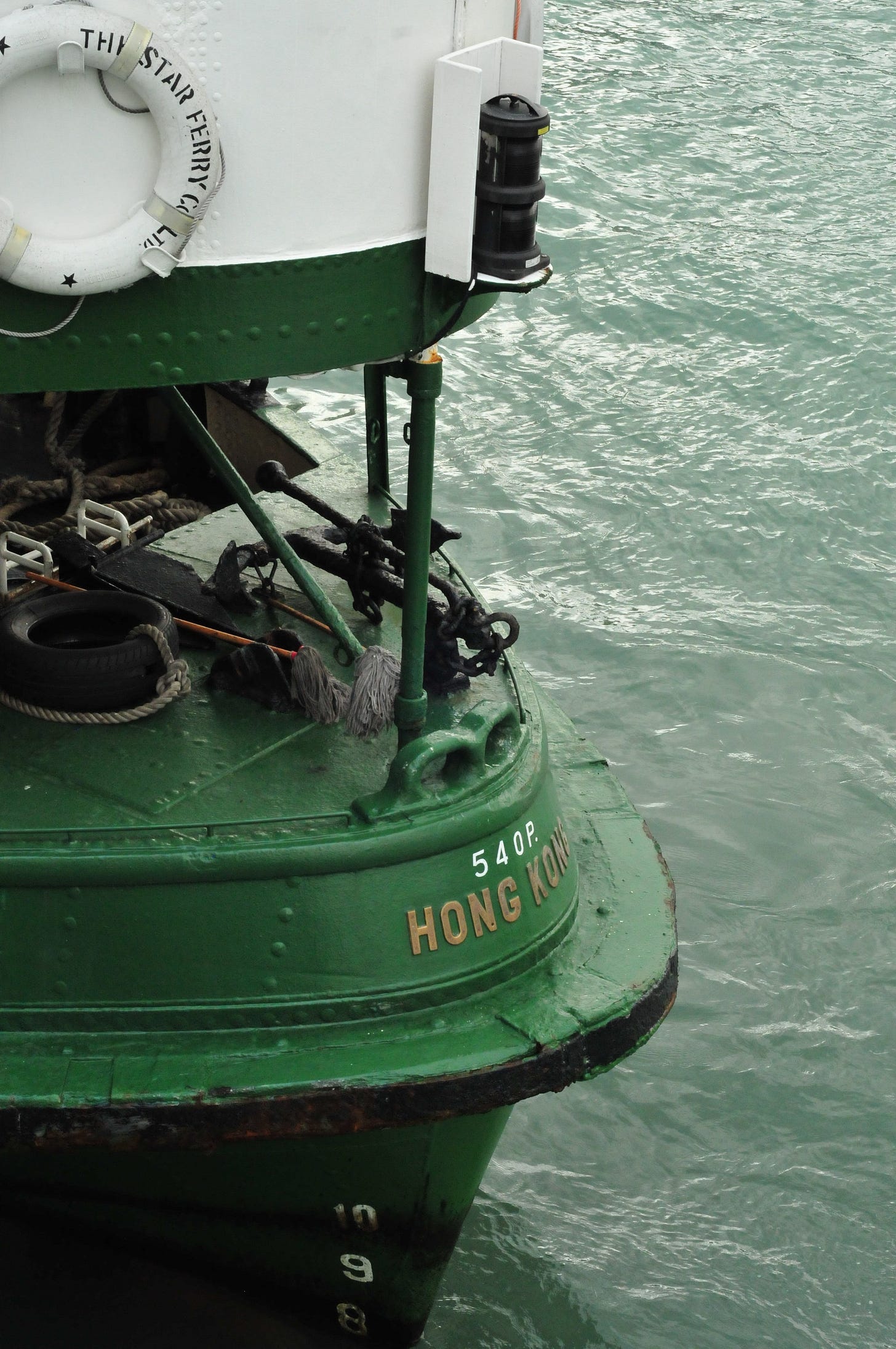the tiger ladies of causeway bay
dig the small strangeness of place and find humans being human.
At the end of the Himalaya, where the booming roof of the world slows down and turns to hills, just past Kunming, merging with the tea fields and the mountain passes where the flying tigers once flew and the monkey man journeyed west, the Pearl River pebbles together its first few puddles. Follow these waters downhill through Yunnan province, past northern Vietnam, and it opens up to the sea in a delta that is bookended with two old ports imposing themselves: Macau and Hong Kong. Head toward Hong Kong into port, past Lantau and Lamma islands, and right there in between Kowloon and the main island, you will find typhoon refuge in a small causeway bay where a large gun goes off each day at noon; and just past the gun and the mad dogs, under the overpass, are three old ladies who sit there incanting and performing what is locally called Villain Hitting. And it is a treat.
Hong Kong is a city that made its name taking unwanted marshy, mountainous land, and turning it into a beehive of finance and trade, and it has been accused of being sterile at times: a giant shopping mall, a large airport terminal. But like any place, if you dig, you’ll find – there is depth, soil, and uniqueness, underbelly. And I don’t mean temples and markets you can walk through, or places to get a suit made, but the strange human and hidden customs. If you want to mainline the undercurrents of the delta region, head to Causeway Bay and spend an hour under the flyover, amongst the paper tigers and the incense.
The process is easy: you line up with the others who have come, just like at the end of the film “Field of Dreams”: some people know what they came for, some just followed the crowd (that’s how I found it, that, and you always find interesting things under the city’s overpasses).
When your turn comes there is a paper tiger and a piece of paper, you write a name of someone you hate on the paper, and there has to be real hate in your heart for this one because the performance of the ladies demands it. It can be a boss, or a vendor that haggled you, or a relative that is driving you nuts, no matter who. The name goes on a sleeve of paper that is then handed with a paper tiger to the lady who takes the paper, and then beats it loudly with a shoe while cursing it in cantonese. And from what I have heard through translation, it ain’t poetry, mostly things like “you are mean, I hate you, you are ugly” over and over again while she smashes the paper.
And it goes on, past your laughter through the awkward stage, and back to laughter again when finally she then takes the paper, puts it into the mouth of the paper tiger, and then lights it all on fire. And at that moment, it actually feels pretty good for some reason. I have yet to discover where the custom comes from or how it came about, and part of me wants to never know, because it is so evergreen, black and white, and I can entirely understand why on Friday afternoons, at the end of a long work week, the lines go around the block.
In a hot city known for intense banking deals and typhoons and dim sum, one needs a vent. This is, after all, island-living. It wouldn’t surprise me if this act originated and was staged by port workers a hundred years ago, needing an emotional rescue. Or it could have come from the small fishing villages that were here long before the traders, villages full of those who need to let off steam from the gentrification of their islands and hamlets by those who sailed into town trading opium and porcelain. Wherever it came from, it is beautiful in a strange way, and should be on the top of your must-see list, far above the famed Victoria Peak. It is in places like the overpass at causeway bay that you can find something like a heartbeat of a place. These are the things we should be searching for when we wander around the globe, the strange connections and interactions rather than the prescribed and digested. The common spaces we gather, and what happens there, the places that aren’t built for capital and consumption, but are built from human-ness and emotion, the sacred places. But if you can’t make it to Hong Kong, that’s ok, they’ve made an app for it, complete with cartoon overpass.







